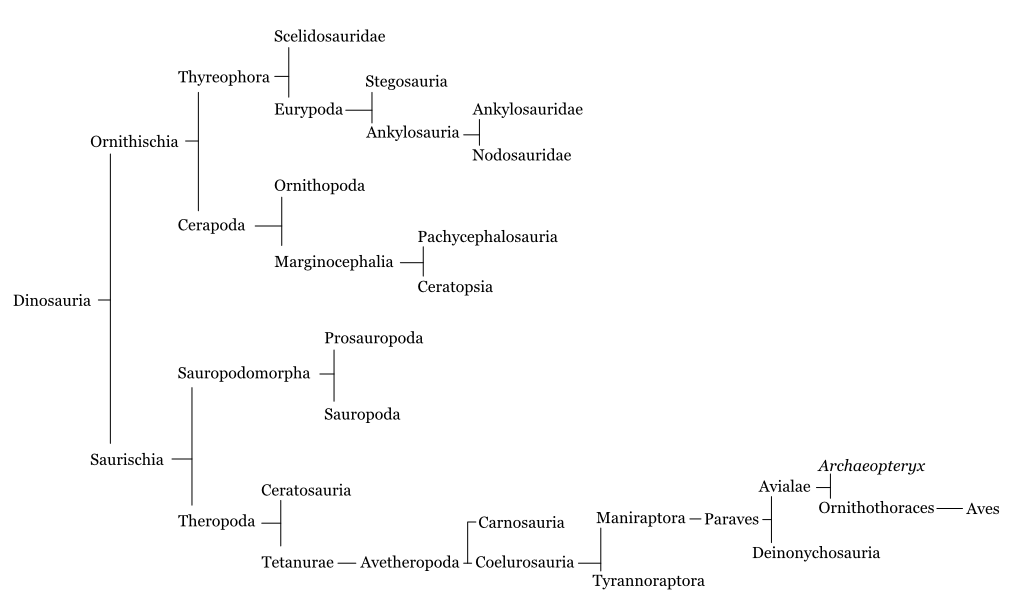A common objection when it comes to discussion of modern dinosaurs is always phrased the same way: “birds aren’t dinosaurs; they’re descended from dinosaurs.” It’s exactly as helpful, meaningful and accurate an assertion as insisting “birds are descended from animals.” It’s true, but what actual point is it trying to make?
Presumably the problem is that a lot of people view evolutionary descent as a series rather than through cladistics – the omnipresent “descent of man” comes to mind. In the serial view, every organism between two others is merely a transition.
But the clades of cladistics include all of an organism’s descendants by definition. Almost any given taxon is a clade and you should not assume otherwise unless explicitly stated. Animalia is a clade, so any descendant of an animal is also an animal. Homo is a clade, so any descendant of a human is also a human. Dinosauria is a clade, so any descendant of a dinosaur is also a dinosaur.
If this doesn’t feel right, have a look at a cladistic diagram rather than thinking dinosaurs → saurischians → theropods → avialans→ birds:

The only way to define “dinosaurs” to include all of that except birds is… to define it as explicitly excluding birds. There is no formal usage of Dinosauria that makes this exception.
As an aside, there are groupings that do exclude certain branches in their definition, termed “paraphyletic” (as opposed to “monophyletic” as clades are). A good example is Reptilia, which omits birds and mammals purely because it is defined as such. Its monophyletic counterpart is Amniota.
Perhaps one just needs to encounter the phrase “non-avian dinosaurs” a few times to truly internalise this.
No comments found.